by George Jacobi, 2018
More than forty years ago, full of the confidence and ignorance of our late twenties, we descended on the Batten Kill valley like a six pack of locusts. Having conquered the hatchery-stocked trout of eastern Connecticut just a year or two into our fly-fishing careers, we felt like true artists with a rich palette of stream skills, so when the opportunity came to fish the legendary Vermont river, off we went. It turned out we were mere kids with crayons. I’ve written about those repeated misadventures before, but I hadn’t actually returned to the canvas where that doodling took place for decades. That finally happened.
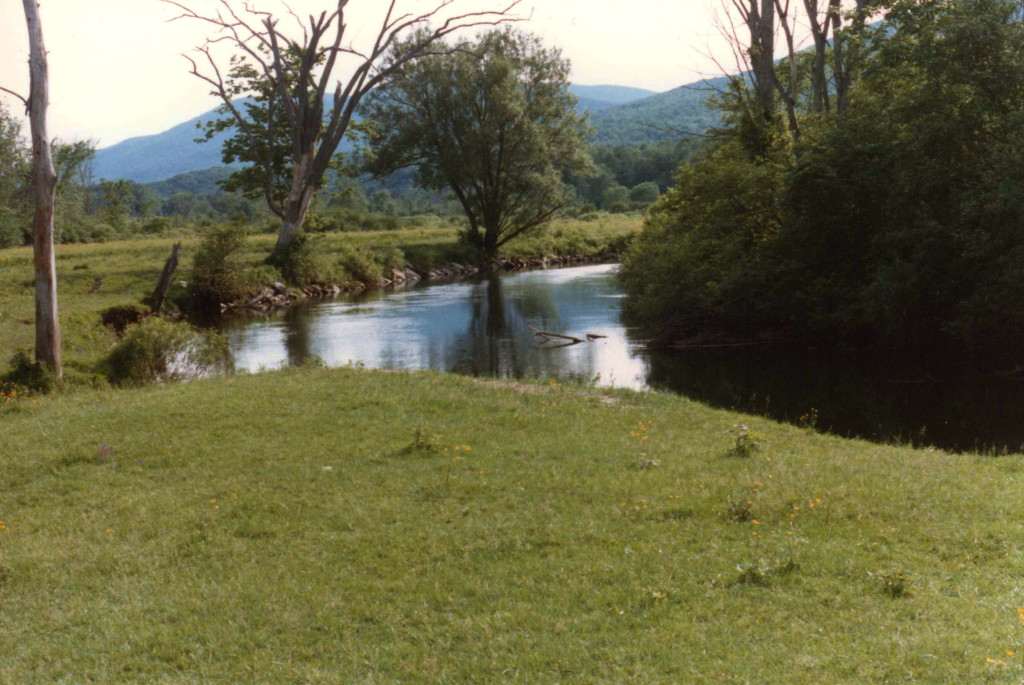
We began at the American Museum of Fly Fishing. All of my cumulative fishing memories seem to fit in there, probably yours too, resting comfortably among those of Lee Wulff and John Atherton, both Batten Kill guys. Maybe they’re not as impeccably smooth as a Bogdan reel, maybe not tied together as neatly as a Harry Darbee dry fly, but they are at home there nonetheless. Then we drove all around, looking for the past.
I didn’t quite get lost; looming Mt. Equinox was almost always visible to tell me where west was. The Batten Kill seemed even more enigmatic than before. Thick alders and scrub hid much of the river, confusing the eye and making it impossible to walk the bank almost everywhere. Thus water views grudgingly offered to John and I were severely limited. This year’s brutally steady rain gave the ‘Kill some color, and disguised most of the rocks and logs too. The charm painted by Ogden Pleissner (The Battenkill at Benedict’s Crossing) was mostly missing. As I recall, the place was always charming, even with a hangover, rain leaking into the corners of my tent.
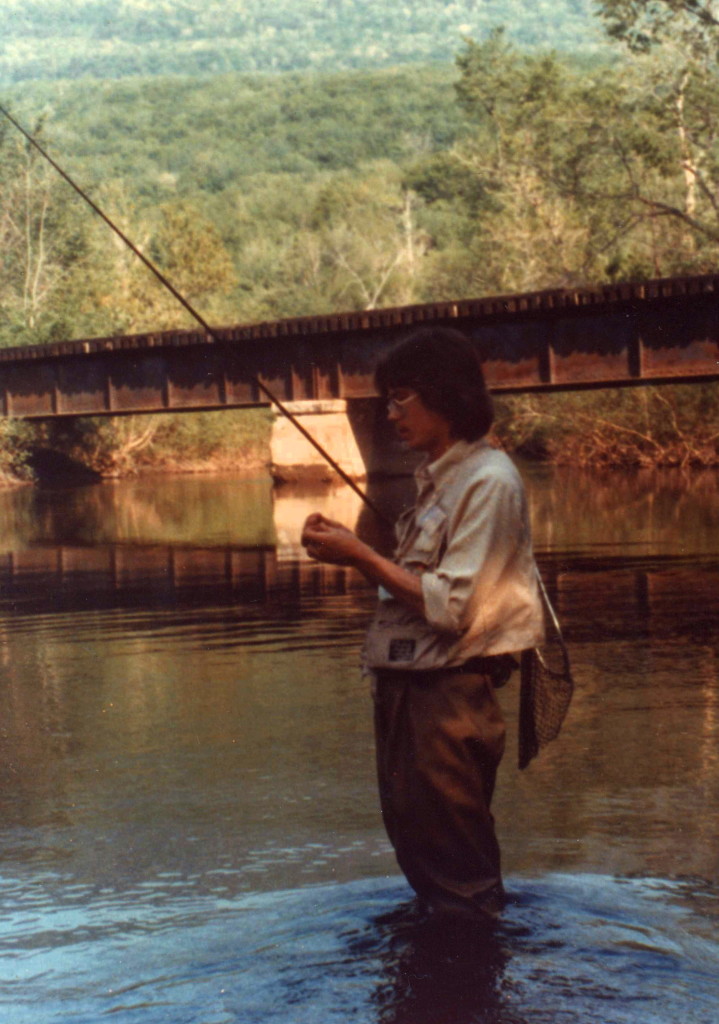
Romanticizing those experiences is easy now. The stillness of the Genesee Pool I remembered. No, it’s not a real pool, we just named it after the bottles of ale that always came along. Yesterday that thick brush made us find a longer way to get there, across a field buzzing with hoppers, but its timelessness felt the same. The smooth surface of the upper Batten Kill tells you nothing; it merely reflects your own desires along with that big green mountain. One night long ago I wandered down to a log jam at the bend, hooked a big brown, and lost it. Back at the head of the pool, I found Palmquist had had the same experience. The next night we switched places – and astonishingly lost each other’s big trout again. After forty years I still say those fish were 18” plus, but to be honest, I’m no longer sure. In my mind’s eye they remain that size. The truth is now far downstream, around the bend and out of sight.
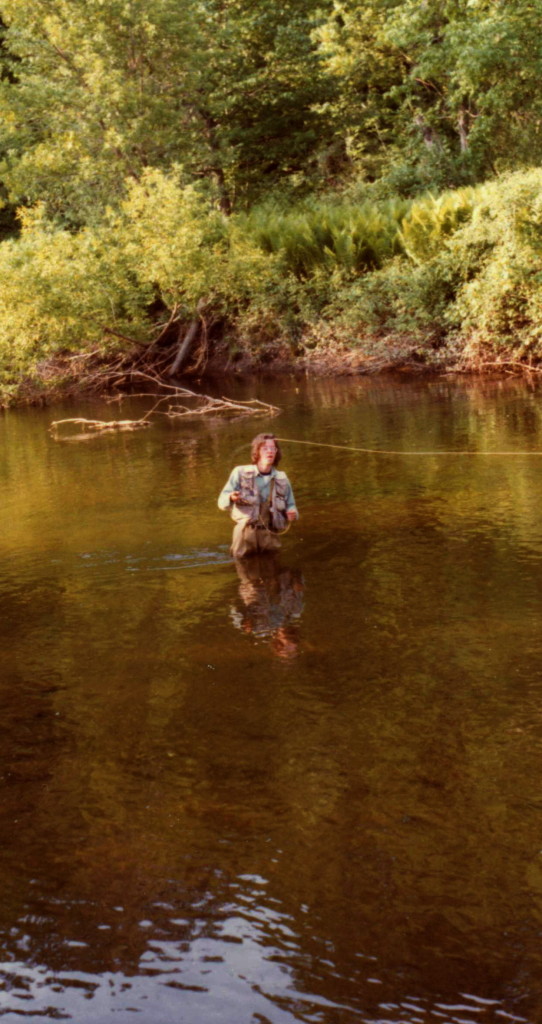
Another painting expresses remembering differently. Everybody knows Salvador Dali’s work, “The Persistence of Memory” – it’s the one with the melted clocks hanging off a table in an empty desert. Dali might be trying to remind us we have no control over time – what we think of as valid memories are but made-up fantasies, dreams we use to cushion ourselves from fear and sadness.
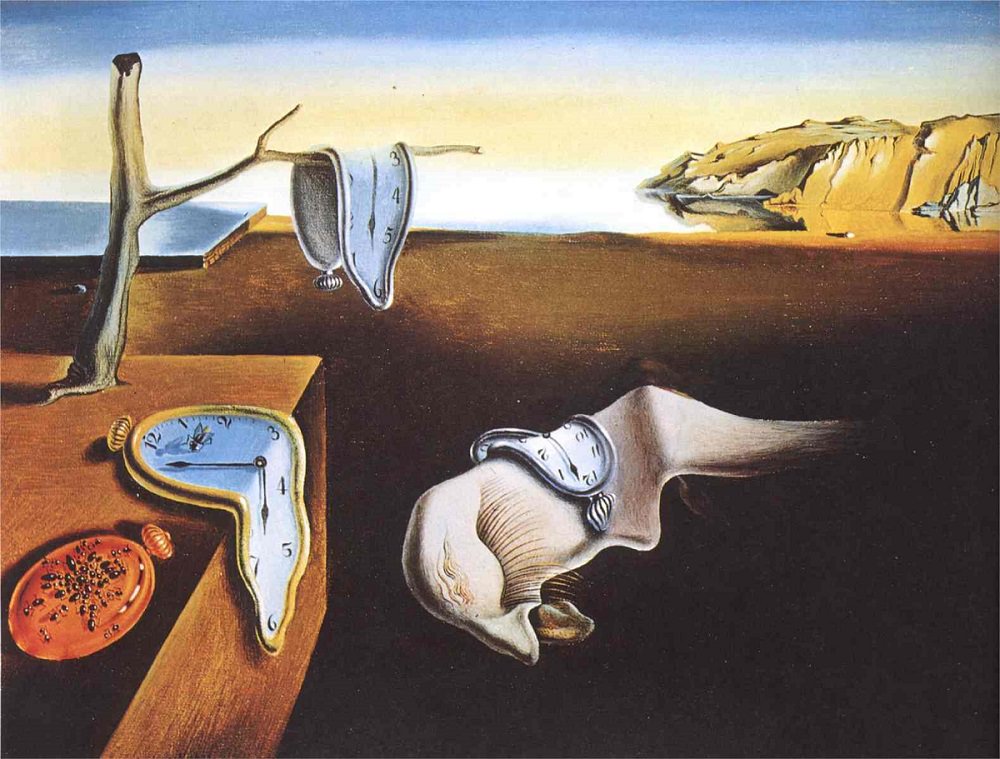
I grew up in Sandy Hook. My first fishing recollections are of hanging off a marina dock in Lake Zoar, the impounded Housatonic River, trying to catch sunnies and pumpkinseeds with nightcrawlers. Up the hill sat my little house, and a ten minute bike ride past that was the elementary school where I spent first to fifth grade. You know that elementary school now, everybody does. But you don’t know it like I do. Small potatoes, but my idyllic childhood reminiscences, those precious August afternoons on the water, were tarnished by that event. It took a while before I decided to reclaim them. I had to make a conscious decision; they had drifted around the bend, out of sight. Now they’re back, and I don’t care if they are even accurate; I’m happy to have them. Dali, great as he was, illustrated only part of our dream world.
We drove down past the Wayside Country Store as far as the covered bridge, and on the way back I found a rich relic of the past. Pleissner painted “The Battenkill at Benedict’s Crossing” in 1978, and we were probably there in Arlington at the same time. Maybe fruitlessly pounding the water, maybe stocking up on Seward Family cheese from Helen at the Store. In the painting it’s a brilliant sunny day in early summer; the shadows on the right, the barn on the left, and the overhanging maple focus your visual interest. The guy has a trout on, his rod bent over. It’s a fine trout, bigger than any we caught that day, I’m sure. Behind him in the middle of the painting, the river disappears around a bend, from sight and from time, leaving us frozen in 1978.
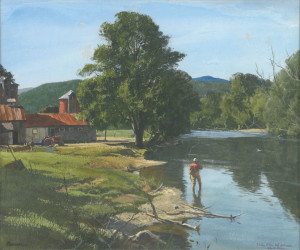
We see 1978, but like 9/11, like 12/14 in the ‘Hook, we can’t return. I hear something no one else hears, though, when they admire Pleissner’s artwork. It’s the farm woman calling from inside the door of her house. She’s yelling to her son to come in for lunch. She hollers “Tadpole! Taaadpole!” apparently his nickname. We heard her calling him every time we were there. The kid was never where he should be, never doing his farm chores on time. “Taaadpole!” Neither mother nor child is visible in the painting, but I’ll bet if Pleissner was still around, he’d confirm my recollection. I guess my memory is not so bad. It’s
a rare painting that you can hear as well as see.

